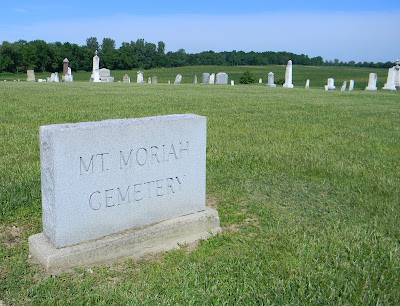James and Eliza were double cousins. Instead of sharing one set of grandparents, they shared both sets. Eliza's mother and James' father were siblings, and James' mother and Eliza's father were siblings. Double cousins are more closely related than regular cousins. "Genetically, they are equal to siblings" reports Wikipedia on the subject, as they have "double the degree of kinship as ordinary first cousins."
James and Eliza lost one daughter before her first birthday, which was, sadly, more common in those days. However, I am unqualified to diagnose the cause of death of their three daughters who died at age 20, 23, and 23, respectively. However, I don't think it is unethical to guess that they may have unfortunately inherited a genetic condition that prevented them from living into adulthood, though it is pure speculation on my part.
Despite the loss of three children as young adults, one son of James and Eliza was known as being a very strong and intelligent man. Job Summerfield Bishop (1824-1911), the oldest son of James and Eliza, lived to be 86 years old. With a wife, Mary Inskeep Moore, and two small children at home, Job served in the Union Army during the Civil War, enlisting in 1861 as a Private in Company E, 62nd Ohio Volunteer Infantry Regiment. He received a disability discharge in 1862. Known for his "zeal and progressive spirit," and for "being a wide-awake, intelligent and enthusiastic farmer," Job served as Treasurer for the Order Sons of Temperance in the latter part of the 19th century (Perrin, et.al., 1880, pgs. 479, 642). The 1875 and 1890 plat maps of Zane Township shows that Job owned 101 acres along what is now State Route 559. The censuses indicate that he owned his land free and clear.
For a visual example of the double cousin relationship, take a look Job's pedigree:
 |
| (click to enlarge) |







